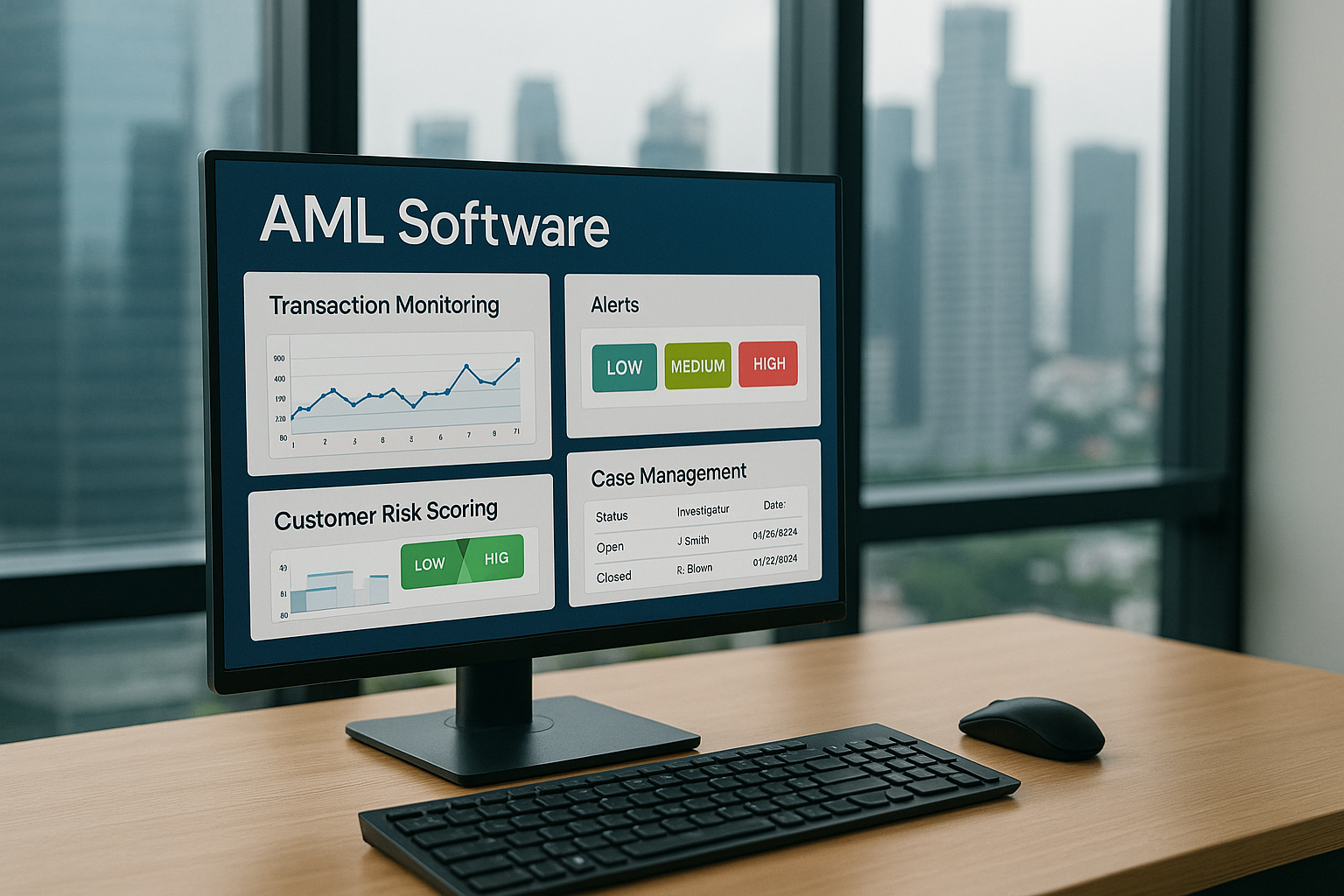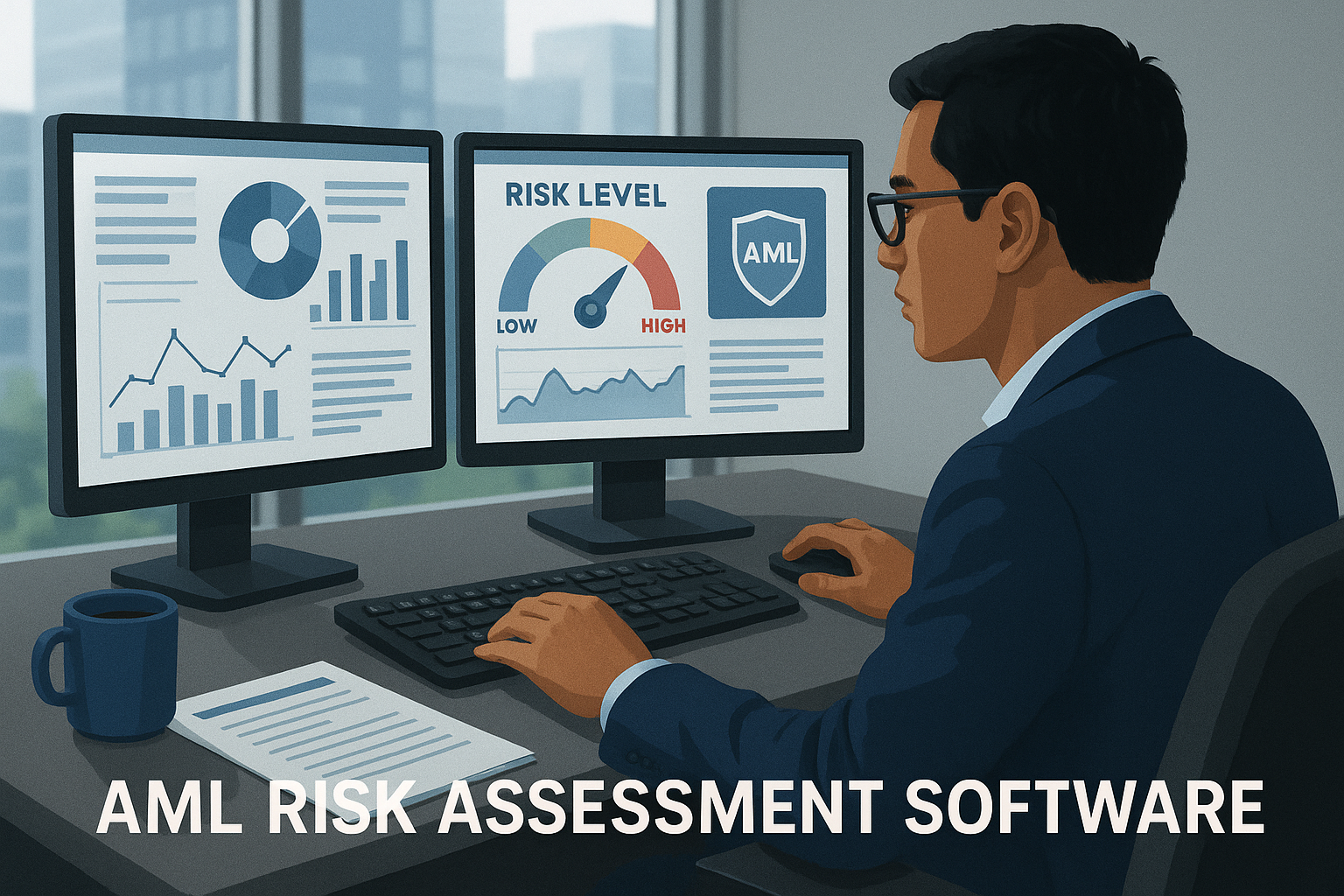The Future of Anti Fraud Monitoring: AI-Powered Fraud Prevention
.svg)
Fraud is evolving at an unprecedented pace, posing a significant challenge for fintech companies worldwide. As fraudsters adopt more sophisticated tactics, financial institutions must leverage advanced anti-fraud monitoring solutions to stay ahead.
Anti-fraud monitoring is essential for detecting and preventing fraudulent activities in real-time. By utilizing AI-driven risk analysis, behavioural analytics, and machine learning, fintech firms can proactively safeguard transactions and customer data.
This guide provides a comprehensive overview of anti-fraud monitoring, covering:
✔️ Why anti-fraud monitoring is crucial for fintech security.
✔️ Latest advancements in fraud detection technology.
✔️ Effective strategies for implementing a robust fraud prevention framework.
✔️ The future of anti-fraud monitoring and how fintechs can stay ahead.
Whether you're a fraud investigator, compliance officer, or fintech professional, this guide will equip you with the tools and knowledge to strengthen your fraud detection capabilities in an ever-evolving financial landscape.
Understanding the Threat Landscape
Fraud in fintech is becoming more sophisticated, with fraudsters leveraging advanced tactics to bypass traditional security measures. Anti-fraud monitoring must evolve to detect new-age threats, including:
✅ Account Takeover Fraud (ATO): Fraudsters use phishing, credential stuffing, and malware to hijack user accounts.
✅ Payment Fraud: Unauthorized transactions, chargeback abuse, and synthetic identity fraud are on the rise.
✅ Social Engineering Attacks: Criminals manipulate victims into revealing sensitive data, bypassing security controls.
The Role of Manual Review in Anti-Fraud Monitoring
While AI-powered fraud detection plays a crucial role in identifying suspicious activities, human expertise is still essential. The manual review helps in:
✔️ Assessing complex fraud cases that automated systems may misinterpret.
✔️ Reducing false positives, ensuring genuine customers aren’t mistakenly flagged.
✔️ Enhancing fraud detection models by refining AI-driven risk assessments.
However, manual review alone is resource-intensive and time-consuming. To improve efficiency, fintechs integrate rule-based systems that:
🔹 Filter out low-risk transactions, allowing investigators to focus on high-risk anomalies.
🔹 Improve fraud prevention without compromising customer experience.
As fraud tactics continue to evolve, a balanced approach combining AI-driven anti-fraud monitoring with expert human oversight is essential for staying ahead of financial criminals.

Understanding Anti-Fraud Monitoring in the Fintech Industry
The fintech industry thrives on innovation, but its rapid growth also attracts fraudsters looking to exploit vulnerabilities. Anti-fraud monitoring is essential for maintaining security, trust, and regulatory compliance in digital financial ecosystems.
How Anti Fraud Monitoring Protects Fintech Transactions
Effective anti-fraud monitoring acts as a guardian, ensuring transactions remain secure, seamless, and fraud-free. It involves:
🔹 Detecting anomalies & suspicious activities before fraud occurs.
🔹 Leveraging AI-driven technologies to prevent unauthorized transactions.
🔹 Enhancing transparency & security across financial networks.
Key Technologies Driving Anti Fraud Monitoring
Predictive Analytics: Uses historical fraud patterns to anticipate and prevent fraudulent transactions.
Machine Learning: Continuously learns & adapts to new fraud tactics, improving detection accuracy.
Real-Time Monitoring: Identifies fraudulent activities instantly, minimizing financial damage.
Each of these technologies plays a vital role in safeguarding fintech platforms against evolving financial crime threats. For fraud investigators and compliance teams, understanding and implementing AI-driven anti-fraud monitoring solutions is key to staying one step ahead of fraudsters.
The Evolution of Financial Crime and Anti-Fraud Monitoring
Financial crime has evolved dramatically, outpacing traditional fraud detection methods. Fraudsters have shifted from basic scams to complex, technology-driven schemes, making anti-fraud monitoring more critical than ever.
How Financial Crime Has Evolved
🔹 Early fraud tactics – Simple scams relying on stolen credentials and manual deception.
🔹 Modern fraud techniques – AI-powered attacks, automated money laundering, and deepfake scams.
🔹 Rise of digital banking & fintech – More transactions, more fraud risks, and a greater need for real-time monitoring.
The Shift from Reactive to Proactive Anti Fraud Monitoring
Traditional fraud detection was reactive—only identifying fraud after it occurred. Now, fintech companies use advanced AI-driven anti-fraud monitoring to:
✅ Predict fraud before it happens with big data analytics & machine learning.
✅ Detect fraud in real time to stop unauthorized transactions instantly.
✅ Reduce false positives by refining fraud detection accuracy with AI-powered insights.
With rapid digitization in financial services, the demand for robust, AI-driven anti-fraud monitoring solutions has never been greater. As fraud continues to evolve, financial institutions must stay ahead with cutting-edge technologies that proactively detect and prevent fraud.
{{cta-first}}
Defining Anti-Fraud Monitoring and Its Significance
Anti-fraud monitoring is a comprehensive strategy that combines technology, analytics, and behavioural insights to detect, prevent, and mitigate fraud risks in financial transactions.
What Does Anti Fraud Monitoring Involve?
🔹 Real-time fraud detection – Identifying suspicious transactions as they occur.
🔹 Advanced analytics & AI – Learning fraud patterns to predict and prevent future threats.
🔹 Behavioral monitoring – Understanding customer behaviour to spot anomalies.
Why Is Anti-Fraud Monitoring Critical?
✅ Protects financial assets – Prevents unauthorized transactions and fraudulent activities.
✅ Builds customer trust – In fintech, trust is a competitive advantage; a strong fraud monitoring system ensures customer confidence.
✅ Ensures regulatory compliance – Helps financial institutions meet AML, KYC, and fraud prevention regulations.
✅ Creates a secure ecosystem – Enables seamless and fraud-free transactions for customers.
In today’s rapidly evolving fintech landscape, anti-fraud monitoring is no longer optional—it’s essential for financial institutions to stay compliant, protect customers, and prevent fraud before it happens.
Technological Advancements in Anti-Fraud Monitoring
The rise of advanced technology is revolutionizing anti-fraud monitoring, enabling faster, smarter, and more proactive fraud detection. Financial institutions are leveraging AI, machine learning, and big data analytics to stay ahead of increasingly sophisticated fraud tactics.
Key Technologies Driving Anti Fraud Monitoring
AI & Machine Learning (ML):
✔️ Analyzes historical fraud patterns to predict and prevent future threats.
✔️ Continuously improves detection accuracy, reducing false positives.
Big Data Analytics:
✔️ Processes vast amounts of transaction data to identify hidden fraud patterns.
✔️ Helps correlate behaviours across multiple channels for better risk assessment.
Real-Time Monitoring:
✔️ Detects fraudulent activities instantly, triggering immediate alerts for suspicious transactions.
✔️ Reduces financial damage by enabling rapid intervention.
Why Staying Updated on Anti-Fraud Technology Matters
As fraudsters adopt AI-driven tactics and automate financial crime, fintechs must continuously evolve their anti-fraud monitoring strategies. The integration of AI, big data, and real-time analysis ensures financial institutions can stay ahead of fraud trends and safeguard customer transactions effectively.
Challenges and Solutions in Anti-Fraud Monitoring
Despite technological advancements, anti-fraud monitoring faces several critical challenges. As cyber criminals adapt quickly, financial institutions must remain vigilant and agile in their approach.
Key Challenges in Anti Fraud Monitoring
🔹 Evolving Cyber Threats:
Fraud tactics are becoming more sophisticated, with fraudsters using AI-driven methods to bypass traditional detection systems.
🔹 Regulatory Complexity:
Navigating the complex landscape of international and local compliance standards is crucial for legal and operational success. Non-compliance can result in hefty fines and reputational damage.
🔹 Data Privacy Concerns:
Balancing robust fraud monitoring with user privacy rights is a significant challenge. Data protection regulations like GDPR demand careful handling of sensitive customer information.
Solutions for Effective Anti Fraud Monitoring
✅ Advanced Security Protocols:
Regularly update security frameworks to counter emerging threats, using AI and machine learning for adaptive risk detection.
✅ Regulatory Alignment:
Ensure compliance with global and local AML, KYC, and data protection laws. Leverage solutions that offer automated compliance monitoring to streamline processes.
✅ Privacy Enhancements:
Implement robust data protection measures such as encryption, anonymization, and secure data storage, ensuring user privacy while maintaining effective fraud detection.
By focusing on these areas, organizations can strengthen their anti fraud monitoring systems, ensuring they remain resilient against both current and future threats. Embracing a comprehensive, technology-driven approach is key to navigating the evolving landscape of financial crime.
The Future of Anti-Fraud Monitoring and Emerging Trends
The future of anti-fraud monitoring is rapidly evolving, driven by breakthrough technologies and global cooperation. As fraud tactics grow more advanced, financial institutions must adopt cutting-edge solutions to stay ahead.
Key Trends Shaping the Future of Anti Fraud Monitoring
Quantum Computing & Advanced Data Processing
Quantum computing has the potential to process vast amounts of fraud data instantly, identifying complex fraud patterns in real-time.
With its immense computing power, it will enhance predictive analytics and improve fraud detection accuracy.
Digital Transformation & AI-Driven Solutions
✔️ The shift to fully digital financial services is driving the adoption of AI, machine learning, and blockchain for fraud prevention.
✔️ Fintechs are leveraging automation to improve fraud monitoring efficiency and reduce false positives.
Global Cooperation in Financial Crime Prevention
✔️ With cross-border transactions on the rise, fraud prevention requires international collaboration between regulators, financial institutions, and technology providers.
✔️ Shared intelligence networks and real-time fraud data exchanges will strengthen global anti-fraud monitoring efforts.
Why Staying Ahead of These Trends is Critical
Financial institutions that embrace innovation and global cooperation will be better equipped to handle evolving fraud risks. As fraudsters leverage AI-driven scams and deepfake technology, staying ahead of these trends is non-negotiable for ensuring secure and compliant financial transactions.
The future of anti-fraud monitoring is proactive, data-driven, and globally connected. Institutions must continuously adapt to emerging fraud threats by integrating the latest advancements in AI, automation, and regulatory intelligence.
{{cta-whitepaper}}
Best Practices for Financial Crime Investigators
Financial crime investigators play a critical role in combating fraud, ensuring financial systems remain secure and resilient. In today’s rapidly evolving landscape, anti-fraud monitoring requires a proactive, data-driven, and collaborative approach.
Key Best Practices for Fraud Investigators
Stay Informed & Continuously Learn
✔️ Keep up with emerging fraud tactics, AI-driven scams, and regulatory changes.
✔️ Leverage certifications and training programs to refine investigative skills.
Collaborate Across Industries
✔️ Work with financial institutions, regulators, and law enforcement to share intelligence.
✔️ Participate in global fraud prevention networks to stay ahead of threats.
Adopt a Holistic Security Approach
✔️ Integrate anti-fraud monitoring with broader cybersecurity and risk management frameworks.
✔️ Use AI-powered analytics to detect anomalies across multiple data sources.
Develop Robust Fraud Response Plans
✔️ Establish clear protocols for handling detected fraud incidents.
✔️ Automate fraud alerts and escalation processes for faster intervention.
Empower Customers Through Education
✔️ Educate clients on common fraud tactics, phishing scams, and digital security best practices.
✔️ Implement fraud awareness campaigns to enhance customer vigilance.
Strengthening Anti Fraud Monitoring for the Future
By embracing continuous learning, industry collaboration, and advanced technology, fraud investigators can stay ahead of financial criminals. A well-rounded anti-fraud monitoring strategy ensures institutions remain resilient against evolving threats, protecting both assets and customer trust.
Conclusion: Staying Ahead in the Fight Against Financial Crime
The fight against financial crime is more challenging than ever, making anti-fraud monitoring a critical priority for banks and fintechs. Staying ahead requires real-time fraud detection, AI-driven risk assessment, and a proactive compliance strategy.
Strengthen Your Fraud Prevention with Tookitaki’s FinCense
Real-Time Fraud Prevention: Tookitaki’s FinCense for Fraud Monitoring delivers 90% accuracy in detecting and preventing fraudulent transactions.
AI-Powered Risk Detection: Using advanced AI and machine learning, FinCense ensures comprehensive fraud risk coverage, identifying and mitigating threats before they cause damage.
Seamless Integration & Operational Efficiency: FinCense integrates effortlessly into your existing fraud prevention systems, optimizing workflows and allowing compliance teams to focus on high-risk threats.
By partnering with Tookitaki, financial institutions can future-proof their fraud prevention strategies, ensuring robust security, regulatory compliance, and customer trust in an increasingly digital-first financial world.
Experience the most intelligent AML and fraud prevention platform
Experience the most intelligent AML and fraud prevention platform
Experience the most intelligent AML and fraud prevention platform
Top AML Scenarios in ASEAN

The Role of AML Software in Compliance

The Role of AML Software in Compliance










